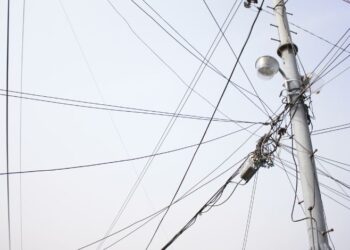Discover where did Laura Ingalls Wilder grow up, exploring the real-life locations that inspired her beloved Little House books.
Let me take you back to a quiet summer night when I was a kid. I was sitting on my grandma’s couch, which had flowers on it, and I had an old copy of Little House in the Big Woods on my lap. The air smelt like warm dust and fresh mint tea. As I flipped the yellowed pages, I could almost see Laura in the big log cabin deep in the woods of Wisconsin, listening to Pa’s fiddle by the fire. And that’s when I started to care about it.
But when I got older, I kept asking myself, where did Laura Ingalls Wilder grow up? Was she really the “little girl on the prairie,” or was that just a lie?
The answer isn’t as easy as just saying one town or one state. Laura’s childhood was a long journey through the harsh American wilderness. She lived in Wisconsin, Kansas, Minnesota, Iowa, and South Dakota, and each place made her a different person and writer.
Let’s take that path together. Here are some photos of Laura Ingalls Wilder’s childhood home, one dusty footprint at a time.
1. Pepin, Wisconsin: The Real-Life “Big Woods” (1867–1869, 1871–1874)
If you’ve read Little House in the Big Woods, you’ve been to Pepin in your mind. Laura was born on February 7, 1867, in a log cabin a few miles from this small town near the Mississippi River.
She spent the first few years of her childhood here, surrounded by trees, with wolves howling in the distance and a close-knit family that included cousins, aunts, and grandparents. The Ingalls family was pretty steady during this time. They farmed, hunted, and made maple syrup, all of which were excellent things that finally gave her debut novel its warm, nostalgic glow.
Why it matters: Pepin was more than just the place she was born. Laura first discovered the rhythms of country life there, and they would show up in every book she wrote after that.
Anecdote: I was a big fan of Pepin when I was an adult. I stood inside the restored cabin that is now on the site that is supposed to be near to her original home. I could almost hear Pa’s fiddle in the wind. For a moment, I was 8 again, barefoot in spirit, and pretending to churn butter next to Ma.
2. Independence, Kansas – Life on the Prairie (1869–1871)
What comes next? The Ingalls family tried to homestead on land that was supposed to belong to the Osage Nation in the wide-open plains of Kansas, not far from Independence. The novel Little House on the Prairie, which is perhaps the most recognized in the series, does an excellent job of showing this time.
They moved when Laura was only a toddler, but when she relates the story again, it seems like she recalls every last blade of tallgrass prairie.
Pa built a one-room wood cabin here that was far apart from other people, rugged, and full of surprises. They had to contend with malaria (which was then called “fever ‘n ague”), the threat of Native Americans being forced to leave, and the terrible realization that they had to go.
Why it matters: This is where the family began their long adventure of moving around to find better opportunities. It also showed Laura and the reader how lovely and challenging life on the frontier might be.
The Little House on the Prairie Museum is presently there. It contains a model cabin and log houses outside. You can almost stand where fiction and reality merge.
3. Walnut Grove, Minnesota – Fighting Poverty and Staying Strong (1874–1876)
The Ingalls family migrated to Walnut Grove, Minnesota in 1874. The TV show made this place famous, even though it was substantially different from the literature. Laura and her brothers and sisters lived in a dugout house on the banks of Plum Creek in this town.
Imagine living in a hole in the ground that is dark, moist, and liable to flood. But Laura painted it like a child would: picking plums, playing in the creek, and battling off swarms of grasshoppers that darkened the sky.
Why it matters: The Ingalls family had a lot of difficulties with money during these years. It was hard to deal with crop failures, debt, and illness. But it was also a time of growth for Laura, both psychologically and physically.
Relatable moment: When I was a youngster, I thought it was crazy that Ma was sweeping the dirt floor of their dugout. Now, I see it as a strong sign of pride in the face of difficulty. It reminds me of how my mum used to scrub our little flat like it was a palace. You need more than just food and shelter to be alive; you also need hope.
4. Burr Oak, Iowa – A Rare Detour (1876–1877)
Even a lot of Wilder fans miss this twist. The Ingalls owned a motel in Burr Oak, Iowa, for a short period. In the first series, we never saw this part of Laura’s life. Why? Some people say it didn’t match with the pioneer spirit theme, while others say she just wanted to forget about it because it was a difficult period.
The family had a terrible time here, both with their feelings and their money. They lost their baby child, Freddie, before they moved. There were a lot of people in town, work was hard, and Laura was bored.
Why it matters: Burr Oak reveals that the Ingalls family didn’t merely live on farms far away. It shows how adaptable they are and what life is like when fantasies don’t come true.
If you’re on the road: Stop by the Masters Hotel in Burr Oak. It’s now a museum about Laura Ingalls Wilder, and the rooms have been redone to help you imagine her life as a little girl washing laundry or peering out of dusty windows.
5. De Smet, South Dakota – The “Real” Little Town on the Prairie (1879 and Beyond)
The Ingalls family migrated one last time in 1879, this time to De Smet, South Dakota. This is where Laura spent her childhood. These Happy Golden Years, The Long Winter, Little Town on the Prairie, and By the Shores of Silver Lake all happen here.
She worked, went to school, made friends for life, met Almanzo Wilder (yes, swoon), and eventually taught in one-room schoolhouses to aid her family. She also started writing down her memories in journals here, which would later become her famous books.
Why it matters: De Smet wasn’t just another stop. It was where they lived. Laura stopped roaming about this town and started to become the author Laura Ingalls Wilder.
Personal note: When I wrote my first short story at age 10, I adopted the pen name “Laura A. Wilder.” That was how strong the effect was. When I sit down to write, I think of Laura writing in the frigid winters of South Dakota, when her fingers were probably numb but her mind was racing.
Why Laura’s Childhood Still Matters
So, where did Laura Ingalls Wilder grow up? The answer is: everywhere and nowhere at the same time. As a child, she lived in wagons, dugouts, log houses, and hotel rooms. When she was a kid, there were wolves outside her window and grasshoppers eating the crops. But most of the time, she lived in the rich inner world of her imagination, which was held together by love, strength, and stories.
Her voyage is a metaphor for many of us: we go through life, often feeling lost, yearning for safety yet finding joy in the small things.
Have you ever considered that you didn’t really have a “home”? I really do. When I was a kid, I went to a lot of places. My roots were more emotional than physical. They were things like telling stories, having family dinners, and reading before bed. That could be why Laura’s life on the road felt familiar and even good.
What You'll Discover:
Key Takings
- Laura Ingalls Wilder’s books are full of memories, but her real life was even more beautiful, challenging, and difficult.
- We not only learn about history when we follow her childhood journey, but we also get back the sense of adventure, simplicity, and storytelling.
- People still ask, “Where did Laura Ingalls Wilder grow up?” Maybe that’s why. When we find her, we often find portions of ourselves.
Additional Resources
- Laura Ingalls Wilder Museum & Birthplace – Pepin, Wisconsin: This site in Pepin, Wisconsin, marks the cabin near where Laura was born and is the setting for Little House in the Big Woods. It recreates her earliest childhood environment.
- Walnut Grove Dugout Site – Plum Creek, Minnesota: This historic site lets visitors explore the exact location where Laura’s family lived in a dugout, as described in On the Banks of Plum Creek.








